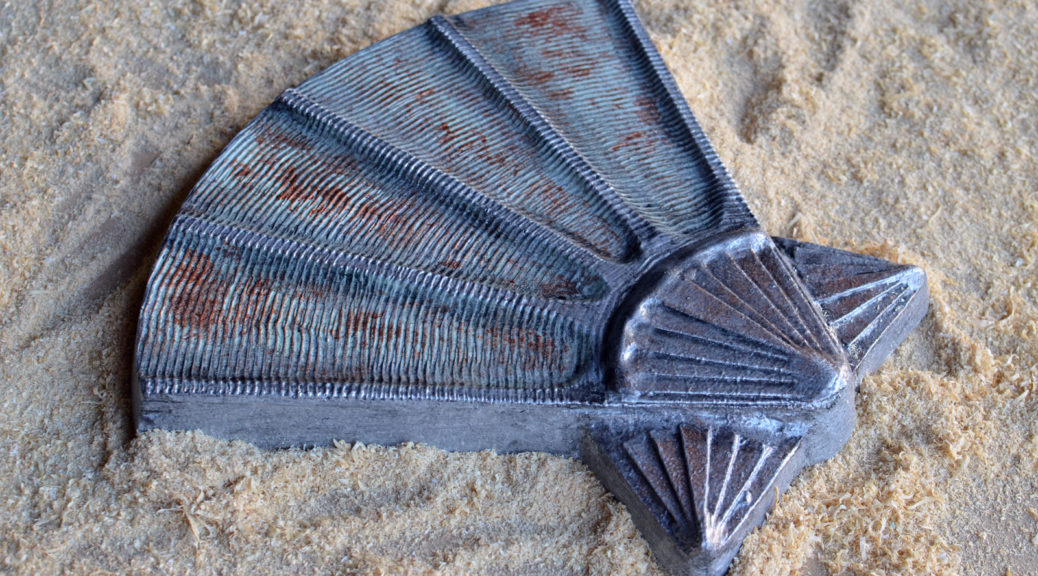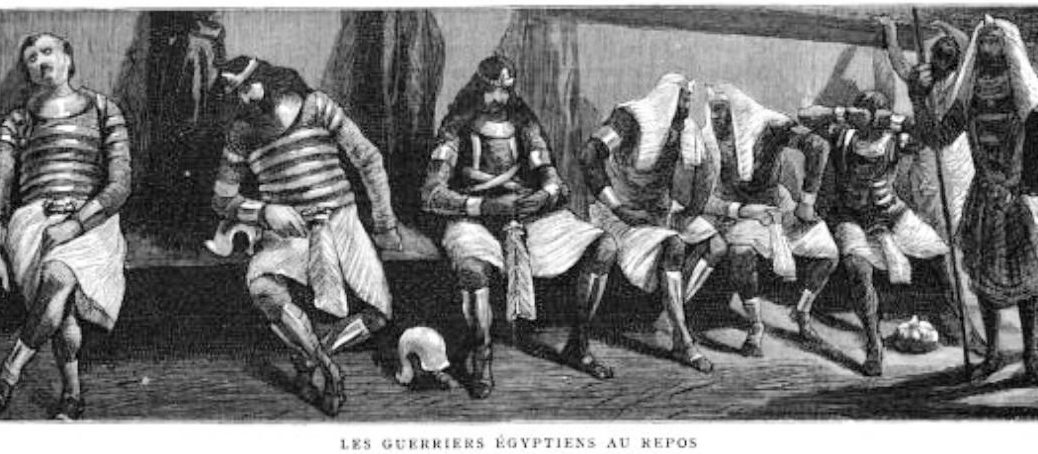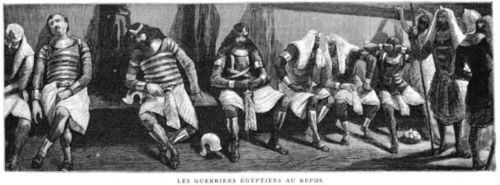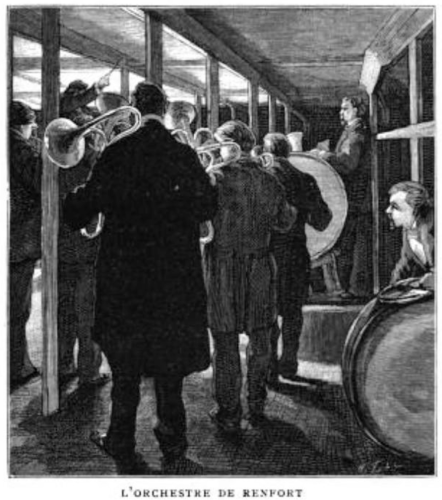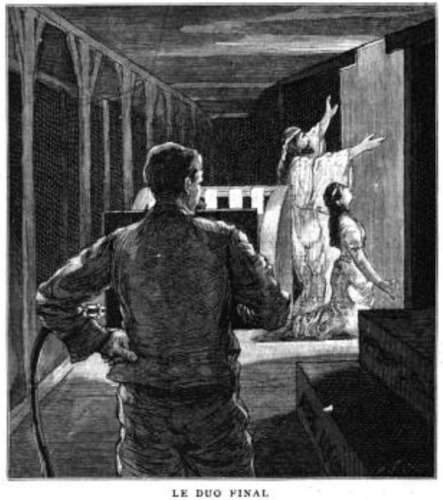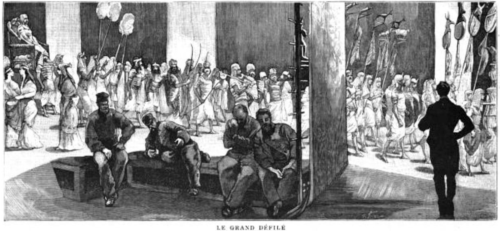When I was a kid, I played a video game called Faery Tale Adventure that was filled with all sorts of magical items. I started making replica props of these items; I needed projects to show off various techniques for the second edition of The Prop Building Guidebook, and I wanted some props I could trot around to Maker Faires. The first one I have finished is a magic seashell, used in the game to summon a friendly turtle.
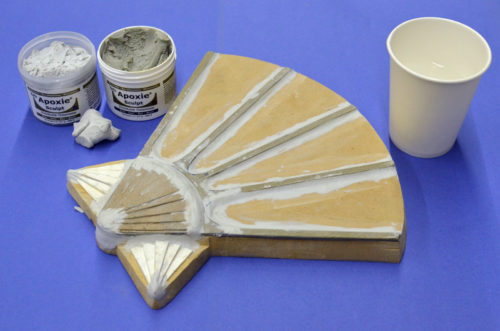
The model was cut out of MDF and layered with pieces of cardstock. I used some Apoxie Sculpt to further refine the shape. I coated it to give it a bit of texture, then spray painted it gloss pink to seal it all together and make it shiny.
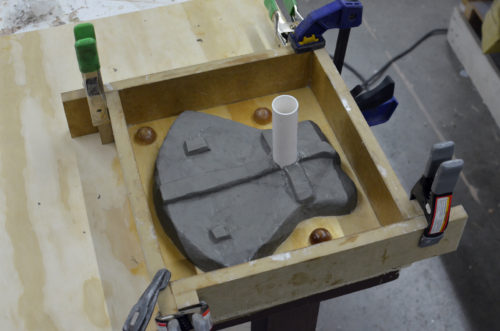
Next I made a matrix mold of the shell. I’ll describe it briefly here, but I have a lot more information in my upcoming book. I also shot a video which I promise will be up later this summer. Basically, you cover the model in a half-inch of clay, build a box around it, and fill it with plaster.
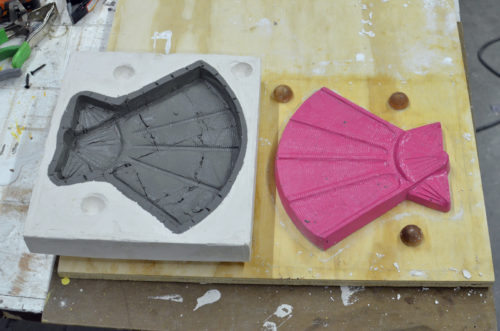
When the plaster is set, you remove the clay and put the plaster mother mold back. This leaves you with a half-inch air gap between the plaster and the model; fill this with silicon rubber.
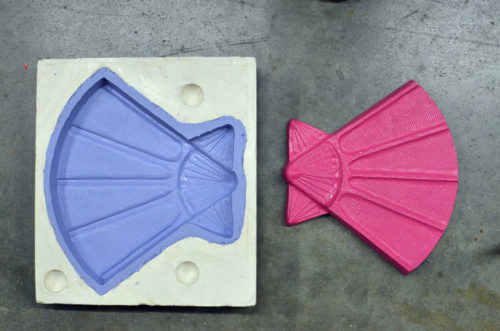
The silicone rubber mold ends up supported by the plaster, and I used the smallest amount of silicone rubber possible. Matrix molding takes a lot more prep work, but it leaves you with very clean-looking results, and saves you money on materials.
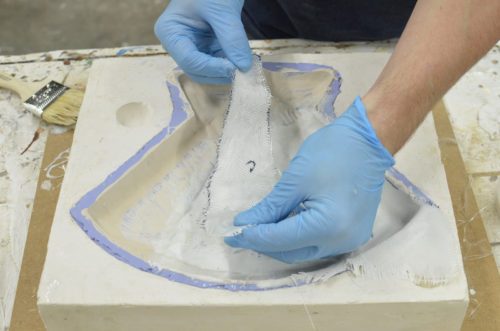
To make the finished piece, I used fiberglass with Aqua Resin. Again, this was for the book; I will have a video of the entire process later this summer. I had never actually fiberglassed a piece from a mold before, so I learned a lot; the final seashell  was actually the fourth one I attempted, and the first I completed without anything going wrong.
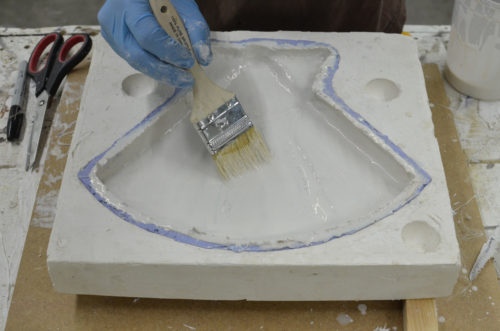
Using Aqua Resin with fiberglass is similar to using polyester resin, but a whole lot less toxic. The end result is a bit more like plaster rather than plastic, but it is still fairly strong and lightweight. I have a few more alternatives to polyester resin that I’ve been wanting to try so I can compare the results.
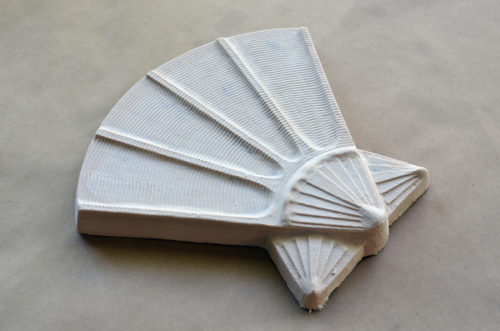
This was not really that great of a piece to demonstrate the advantages of using fiberglass. It is very flat; you can easily create it using sheet goods, such as lauan, and still have it remain strong but lightweight. Fiberglass becomes more useful when you need an undulating skin, like a mask, that needs to be hollow but retain a consistent thickness throughout. But these are things I think about long after I have begun a project, when it is too late to start a new one from scratch. I say this for those of you who will look at this prop and ask, “Why did he bother with fiberglass? Why not just cut it out of thin plywood?”
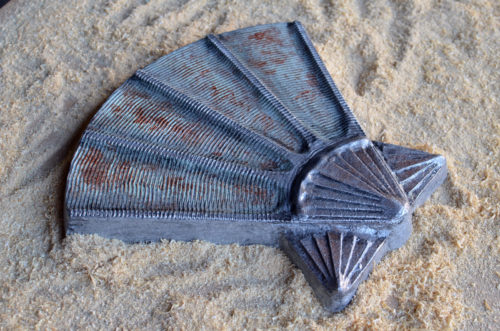
With the piece finished, I painted it with a number of metallic paints, as well as a dark wash for the cracks and crevices, and some Rub’n Buff for highlights along the edges.
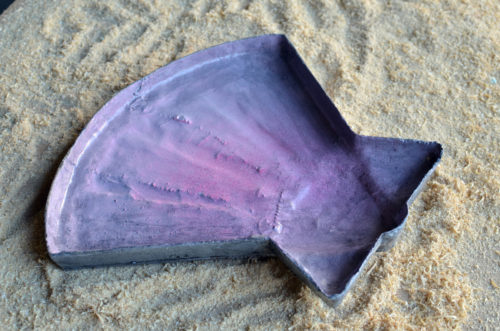
It’s magic! Good enough to sell on the seashore.

